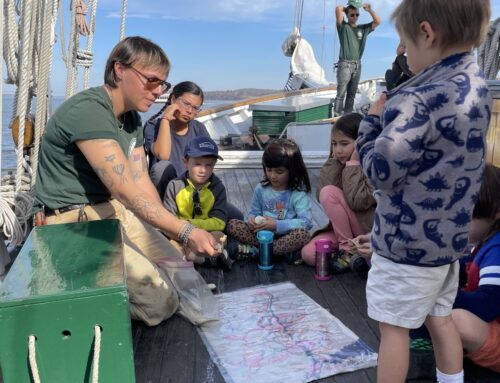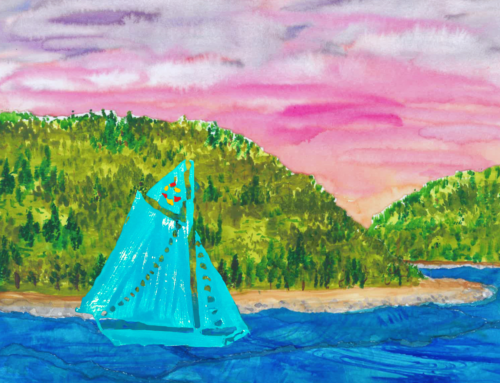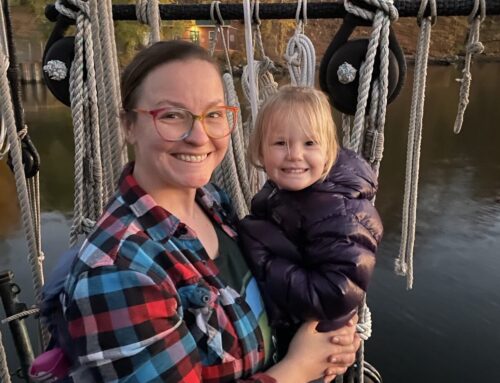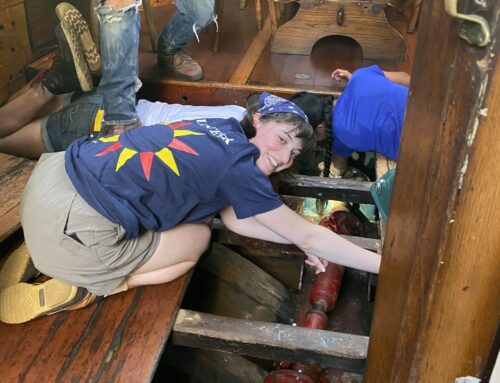Environmental Education is back; this is the time of year teachers use nature as a tool to increase learning in various disciplines.
Education is heading outside in the Hudson Valley. Local schools and educators are taking students outside to learn, and as a result are witnessing the benefits of environmental education in student achievement, motivation, critical thinking, test scores, and other skills. But schools are pressed for resources to implement this promising tool, a challenge that would be addressed by legislation re-introduced this week in Congress: the No Child Left Inside Act.
Tery Udell of J.V. Forrestal Elementary School is only one example of a local Beacon City School System using environmental education as a means to improve learning. Ms. Udell has taken her 4th grade classes out on the sloop Clearwater over the past 4 years to experience hands-on learning experiences onboard the historic sloop as she sails the Hudson River. Onboard, students catch and observe fish, learn about water quality, the physics of sailing a vessel, study maps of the river, and learn about the rich history of the Hudson River Valley.
Ms. Udell has also modeled her class room curriculum after the folk legend and Clearwater founder Pete Seeger in teaching the tradition of activist music, working with her classes to develop songs about protecting the river and the environment. Ms. Udell’s students have gone on to perform as the Rivertown Kids with Pete Seeger, receiving a Grammy Award in spring 2011 for Best Musical Album for Children, an example of nature and the environment inspiring art and community activism.
Clearwater appreciates and values how environmental education uses the outdoors as a tool for hands-on learning. Camp Clearwater is now in its third year of providing adventure training program for youth that promotes positive community-building, and a place where each one has an equal voice. Campers take part in a complete natural environment emersion, spending several days in the wild camping, hiking, rock climbing, kayaking, and exploring the beautiful Hudson Valley. During the course of the program, youth develop knowledge and respect for the natural world and leave the program having experienced first-hand the history, ecology, and culture of the Hudson River Valley.
Education Instructors onboard the sloop Clearwater, also work with students in collecting and assessing data on the water quality of the Hudson River. Studies show environmental education can improve student achievement and test scores, especially in math, science and other core subjects, and help students think more effectively by providing a real-world context for classroom instruction, while preparing them for the 21st century workforce.
But in New York’s Hudson River Valley, and elsewhere, educational resources are stretched thin, especially to train teachers in environmental education, and to plan effective programs.
“Some of the most memorable learning experiences I had while growing up took place when a teacher arranged a trip to a forest, a river, or a farm,” said David Conover, Clearwater’s Education Director, “This legislation will help provide the resources and support that will enable teachers and administrators to extend learning beyond the classroom. It will also help prepare students to take on the serious environmental challenges we face today.”
Environmental education in various forms started in the 1970s. With the advent of standardized testing and the passage of the federal No Child Left Behind law in 2001, many schools and educators scaled back environmental education to focus on reading and math–subjects covered by high-stakes standardized tests. In recent years, however, environmental education has enjoyed a dramatic resurgence, perhaps as educators reacted to “teaching to the test” approaches.
This past Thursday, July 14, Senator Jack Reed (D-RI) and Congressman John Sarbanes (D-MD) introduced the bi-partisan No Child Left Inside Act into the 112th Congress. This bill could help schools and organizations by providing financial and other assistance to states which are bolstering environmental learning. More than forty states are taking action to urge the development of statewide “environmental literacy” plans, and outdoor plans and strategies.
Other signs of a national resurgence in environmental education are abundant:
• The number of high school students taking the Advanced Placement Environmental Science course jumped 426 percent in the past 10 years compared to an average increase of 97 percent for all AP subject exams over the same period. Please click here for more information.
• At least 200 green charters schools have opened across the country in recent years using a research-based curriculum called EIC, or Environment as an Integrating Context for learning. The idea involves using nature and the environment as a teaching tool for everything from math to reading to history. Please click here for more information.
• Between 1995 and 2005 all 50 states expanded and strengthened their environmental education programs by 80 percent, measured by the number of key components implemented: dedicated funding, professional development, comprehensive EE plan, etc. Please click here for more information.
• Nearly 2,000 schools have joined the national Green School Alliance. Green schools are designed or retrofitted to consume less energy, to reduce waste, and to connect environmental education curriculum to a school’s sustainable features. Please click here for more information .
Clearwater supports the No Child Left Inside Act, which will support effective environmental education programs in our Hudson Valley. Senator Reed and Congressman Sarbanes continue to demonstrate tremendous vision in championing this critical and historic legislation and we are grateful to them for all that they are doing to make environmental education an integral part of every American child’s education.
Once again, many members of Congress have agreed to co-sponsor the NCLI Act, including Senator Mark Kirk (R-IL), whose leadership provides a critical bipartisan boost.





